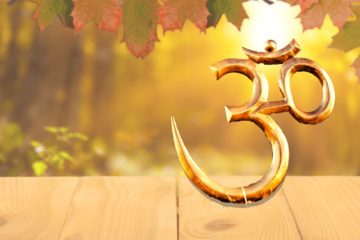Summary of Contents
WHAT IS YOGA?
Yoga means union. Etymologically, it is connected to the English word, yoke. Yoga means union with God, or, union of the little, ego-self with the divine Self, the infinite Spirit.
Yoga is primarily a spiritual discipline. Yoga is an ancient science that is thousands of years old. It takes into account the influence on each other of body and mind, and brings them into mutual harmony. So often, for instance, the mind cannot concentrate simply because of tension or illness in the body, which prevent the energy from flowing to the brain. So often, too, the energy in the body is weakened because the will is dispirited, or paralyzed by harmful emotions.
Yoga works primarily with the energy in the body, through the science of pranayama, or energy-control. Prana means also ‘breath.’ Yoga teaches how, through breath-control, to still the mind and attain higher states of awareness.
Breath is life. Pranayama (control of the life force-known as prana in yoga) is the practice of specific breathing techniques that increase oxygen intake and encourage the absorption of prana into the body’s subtle energy channels (nadis) and energy centres (chakras). Pranayama is one of the most important practices in yoga. Through the practice the yogi is able to control the nervous system and obtains gradual control over the mind. Yogis have known for thousands of years that if we control our breathing patterns we can control our mind.
When the mind and body are continually overworked their efficiency diminishes. Relaxation is nature’s way of recharging. Yoga emphasises the importance of proper relaxation as a way to regulate our energy and create a sense of balance to enhance our physical and mental health. Three methods of relaxation are used by yogis—physical, mental and spiritual.
A simple and natural diet based on seasonal, local and organic fruits, vegetables, grains, nuts, seeds, legumes and dairy optimises physical and mental health and fosters harmony with the world around us. Yogis know that food has a subtle effect on the mind. Full of prana a pure, moderated diet is the best possible guarantee of physical and mental health, bringing harmony and vitality to body and mind.
Our thoughts define who we are. Yoga teaches us that every thought we have has an impact on us personally as well as the world around us. An optimistic outlook and the ability to focus create uplifting vibrations and a healthy, peaceful and joyful life. Yoga teaches us that our thoughts are the real cause behind our success and happiness in life. Once we master the art of positive thinking, we are happy, harmonious and peaceful, and our ability to comprehend higher truths as well as to maintain a powerful meditation practice will follow.
FOUR PATHS OF YOGA
4 Paths of yoga are basically the 4 different approaches for different individuality of the person to reach the ultimate goal of yoga. All 4 paths of yoga do not represent the separate goal from each other. Although the journey of practicing each path is different, the ultimate goal of 4 paths of yoga is union with supreme-soul. This union leads us towards Sat Chit Ananda & can be achieved only through the consistent practice of yoga.
1. Karma Yoga
Karma Yoga – the Yoga of action – is the path chosen primarily by those of an outgoing nature. It purifies the heart by teaching you to act selflessly, without thought of gain or reward. By detaching yourself from the fruits of your actions and offering them up to God, you learn to sublimate the ego.
The true meaning of Karma yoga is the union with the work we do. When we truly unite with our karma there is no more outcome desire rest in our mind because we simply become our karma.
2. Bhakti Yoga
Bhakti Yoga is the path of devotion, which appeals particularly to those of an emotional nature. The Bhakti Yogis are motivated chiefly by the power of Love and sees God as the embodiment of Love.
Through prayer, worship and ritual, he surrenders himself to God, channeling and transmuting his emotions into unconditional love or devotion. Chanting or singing the praises of God form a substantial part of Bhakti Yoga.
3. Raja Yoga
Raja Yoga and Hatha Yoga is the science of physical and mental control. It offers a comprehensive method for controlling the waves of thought by tuning our mental and physical energy into spiritual energy. Raja yoga is the source of many styles of yoga we practice today. Another name for Raja Yoga is ‘Yoga of mind’ because most of the practices of it focused on seeker’s state of mind.
4. Jnana Yoga
Jnana Yoga – the Yoga of Knowledge and wisdom – is the most difficult path, requiring tremendous strength of will and of intellect. Taking the philosophy of Vedanta, the Jnana Yogi uses his intellect to enquire into his own nature, dissolving the veils of ignorance and illusion.
Before practicing Jnana Yoga, the aspirant needs to have integrated the lessons of the other yogic paths – for without selflessness and love of God, and strength of body and mind, the search for Self-realization can become mere speculation.
ASHTANGA YOGA – THE EIGHT LIMBS
The core of Patanjali’s Yoga Sutra is an eight-limbed path that forms the structural framework for yoga practice. Upon practicing all eight limbs of the path it becomes self-evident that no one element is elevated over another in a hierarchical order. In brief, the 8 limbs of yoga are as follows:
1. Yamas
- Ahimsa – non violence, non injury. Vegetarianism is part of the practice of ahimsa. The great Indian saint Gandhi is famous for the practice of ahimsa
- Satya: truthfulness, not telling lies.
- Brahmacharya: chastity, sublimation of sexual energy.
- Asteya: non-stealing, non covetousness, lack of jealousy.
- Aparigraha: non-accepting of gifts or bribes.
2. Niyamas
- Saucha: purity (external and internal).
- Santosha: contentment.
- Tapas: austerity.
- Swadhyaya: study of religious scripture.
- Ishwara Pranidhana: worship of the Lord, surrender of the ego.
3. Asana
For spiritual pursuit, as for any other pursuit in life, a healthy and strong system is essential. A steady mind presupposes a steady body.
4. Pranayama
Control of the vital energy
5. Pratyahara
withdrawal of the senses from objects
6. Dharana
Concentrating the mind upon either an external object or an internal idea, to the exclusion of all other thoughts.
7. Dhyana
Meditation is defined as an unbroken flow of thought towards God to the exclusion of other sensual perception.
8 Samadhi
It is the super-conscious state.
Note that the Yamas and Niyamas constitute the ethical foundation of the Yoga practice, straighten out the mind, and help reduce agitations and restlessness. Asana, Pranayama and Pratyahara are external practices, while Dharana, Dhyana and Samadhi are considered advanced internal practices.
Even though there is an idea of progression in the practices, one doesn’t have to wait for ethical perfection before attempting concentration and meditation. In fact all the stages are involved together. For example, one cannot meditate if one doesn’t have good posture and possess a certain calmness of breath, thus achieving an inner focus at the exclusion of everything else.
Reference: Ananda Organization & Sivananda Organization




[…] Understanding about yoga […]
[…] Understanding about yoga […]
[…] Understanding about yoga […]
[…] Understanding about yoga […]
[…] Understanding about yoga […]
[…] Understanding about yoga […]
[…] Understanding about yoga […]
[…] Understanding about yoga […]
[…] Understanding about yoga […]
[…] Understanding about yoga […]
[…] Understanding about yoga […]
[…] Understanding about yoga […]
[…] Understanding about yoga […]
[…] Understanding about yoga […]
[…] Understanding about yoga […]
[…] Understanding about yoga […]
[…] Understanding about yoga […]
[…] Understanding about yoga […]
[…] Understanding about yoga […]
[…] Understanding about yoga […]
[…] Understanding about yoga […]
[…] Understanding about yoga […]
[…] Understanding about yoga […]
[…] Understanding about yoga […]
[…] Understanding about yoga […]
[…] Understanding about yoga […]
[…] Understanding about yoga […]
[…] Understanding about yoga […]
[…] Understanding about yoga […]
[…] Understanding about yoga […]